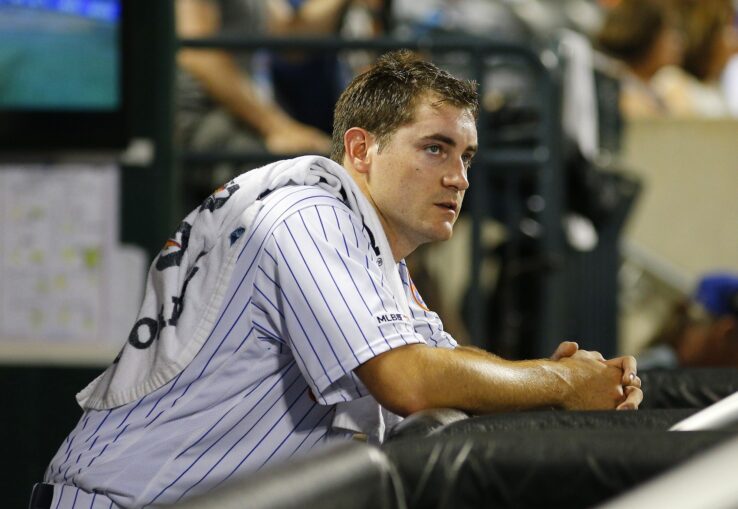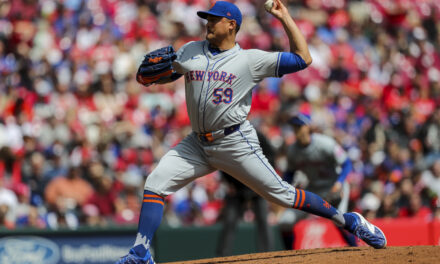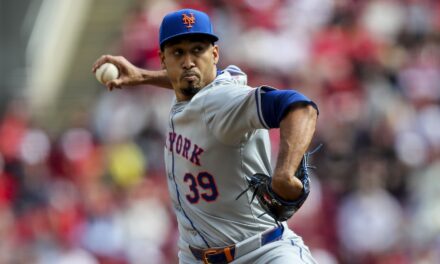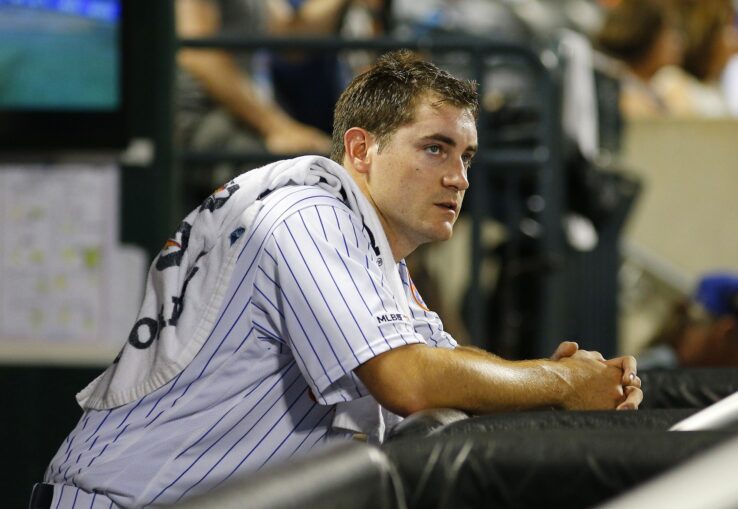
Growing up in the 1960’s and 70’s, one of the annual occurrences which seemed as inevitable as death and taxes was that the San Francisco Giants would fall victim to what was called the June swoon. They would get out of the gate quickly, raise hopes, and then falter as spring turned to summer.
Forget the Giants. The Mets have now elevated the June swoon to an art form. Indeed, it hardly seemed possible that we could witness a June as dispiriting as last year, when the Amazins channeled the ‘62 Mets with an almost inconceivable record of 5-21 that rendered the remainder of the season meaningless. This year’s June ledger of 10-18, punctuated by seven straight losses late in the month – six to divisional rivals – may be statistically superior to one year ago, but the end result as July beckons is identical: A comeback win concluding the month was pleasant, but the reality is that meaningful games have likely all but ended. Again.
Instead of participating in an expected four-way battle with the Braves, Phillies and Nationals, the Mets have been reduced to holding off the Marlins. They are two rungs away from the league’s worst record and 11th in line for a wild card. Barring another once-in-a-lifetime, 1969-style miracle, as unwittingly admitted by the manager, the season appears lost. Again.
How could this be happening? The team’s spiral into oblivion is, for most observers, as surprising as it is disappointing. No one can deny that the 2019 version of the Metropolitans possess talent – on paper – clearly superior to last season. And yet, they are threatening the ‘92-’93 Mets for the title of the worst team money could buy.
If you had to pinpoint a single factor – ground zero in this precipitous decline, it would have to be the complete meltdown of Jeurys Familia. Pegged as the penultimate rather than ultimate bullpen weapon, a role the front office – and fans generally – welcomed for the one-time Mets closer, Familia was designated as the critical bridge from Seth Lugo to Edwin Diaz. He would allow Lugo to pitch one inning instead of two on most occasions, take pressure off Diaz to provide more than three outs, and relegate Gsellman and the newly acquired Justin Wilson and Luis Avilan to their proper roles as long man and lefty/crossover specialists. It all seemed to line up perfectly.
But after a reasonably promising start, Familia completely lost his grip, unable to pitch even to the level of a mop-up man, and then went to the IL with a shoulder injury that may be real, or was perhaps concocted as an easy excuse to just shut him down. Throw in the lingering injuries to Wilson and Avilan, and we have borne witness to an historic downward spiral for this bullpen from which it has not recovered – and which has now likely cost this team the season. Nothing crushes the spirit of a team more than a bullpen which can not be trusted to protect the fruits of long hard labor by the starting pitcher and offense.
Because of Familia’s failures, Lugo has been forced to pitch too many innings and coughed up late leads while getting bombed in three straight outings. Diaz is under pressure to enter in the 8th inning, even as he has repeatedly failed to close the deal in the 9th. Gsellman and the likes of Brooks Pounders, Chris Flexen and Wilmer Font have been forced into medium- and high-leverage situations. The results are avert-your-eyes ugly. And there is no solution short of hoping the trio of Lugo, Familia and Diaz can pitch to the back of their baseball cards. There is no alternate reality, no bullpen savior on the horizon.
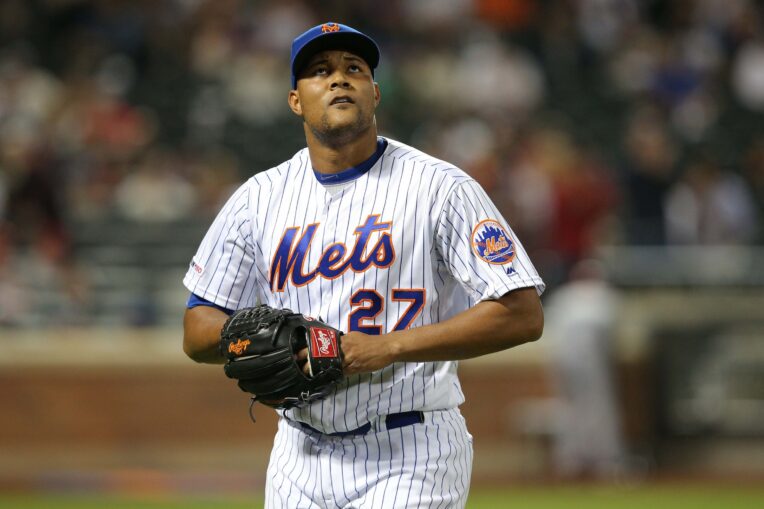
So how much of the blame should fall on the increasingly narrow shoulders of Brodie Van Wagenen and his much-vaunted off-season makeover? While Diaz has been a shadow of the dominant closer of 2018, Robinson Cano, despite some recent signs of life, has become a subject of scorn and derision as he carries an OPS below .650 and has driven in a grand total of 18 runs – 18 RBI’s in half a season batting third, with two all-stars batting around you! How is that even possible? Jed Lowrie, acquired to be a key cog in the Mets offense and veteran leader, is apparently in the witness protection program. Wilson and Avilan are almost as anonymous as they linger endlessly on the IL and leave the Mets without a single lefty in a bullpen which was supposed to be well stocked with southpaws. Among the new General Manager’s multiple acquisitions, only a couple have panned out at all. Wilson Ramos has been productive on offense, but his defense, and apparently his game-calling skills, have been remarkably deficient. Likewise, J.D. Davis offers promise with the bat but has no position.
So how about the dead man walking, Manager Mickey Callaway? Even the many – or most – who believe this guy is in way over his head should be able to sympathize with his plight. If all his relievers keep blowing up, what options remain for him? The futility of it all finally got to the embattled manager in Chicago, as he exploded at a reporter almost as a cry into the darkness. He knows his end is nigh.
Take a step back from your fury and consider whether you really believed a dominant closer would become sub-ordinary, a good set-up man would become awful, and a reliable bridge reliever would suddenly become entirely unreliable – all at the same time. Sure, we have seen this kind of thing happen before in the Mets’ snakebitten history, but revisionist hysterics aside, most every informed observer believed this bullpen figured to be a strength instead of a weakness. And think how different the record would be if the pen had delivered even an ordinary performance. Over. 500 at a minimum. As one who believed Van Wagenen’s offseason reboot was mostly well-conceived for a team committed to winning now and capitalizing on a power rotation, it is all baffling, inexplicable even.
When Roberto Alomar was acquired in 2002, the Mets had good reason to believe, even though Alomar had reached an advanced age, that his historical (and ultimately Hall of Fame-worthy) performance would largely continue in New York. Was then-GM Steve Phillips to blame for Alomar suddenly turning into an old man overnight? Apart from the very real issue of whether it was wise to take on a commitment of five years and $100 million for a 36 year old future Hall of Famer (unless he is derailed by his PED suspension), would we have expected Cano to channel Alomar (who unlike Cano, did not arrive with an unmovable contract) and become not just an underperformer, but a wildly unpopular millstone – a la Ollie Perez or Jason Bay – around the neck of a franchise suddenly looking to divest rather than invest at the trading deadline? It doesn’t help that Cano often appears blissfully oblivious to the carnage around him, his body language suggesting “I’ve got my guaranteed years, my guaranteed money, my World Series ring and my Cooperstown legacy in the bank, so I really don’t care that much if this team goes in the tank.” And he was supposed to be the new clubhouse leader.
So here we are again, glumly conceding that the diminishing number of fans who continue to pay attention must change their outlook from how we might pick up that extra rotation or bullpen arm, or Cespedes-like savior, at the trade deadline, to what crumbs off the end of the table we can obtain in return for half a season of Zack Wheeler or Todd Frazier. Unless, of course, there’s an every-half-a-century miracle in the offing.
It’s one thing to see an overmatched team finish down in the standings, per 2010-14 – you can at least appreciate when they overperform. But it’s quite another to live through a season with justifiably high expectations which falls into the dustbin of history before summer even hits stride. Oh well. There’s always Strat-O-Matic.


